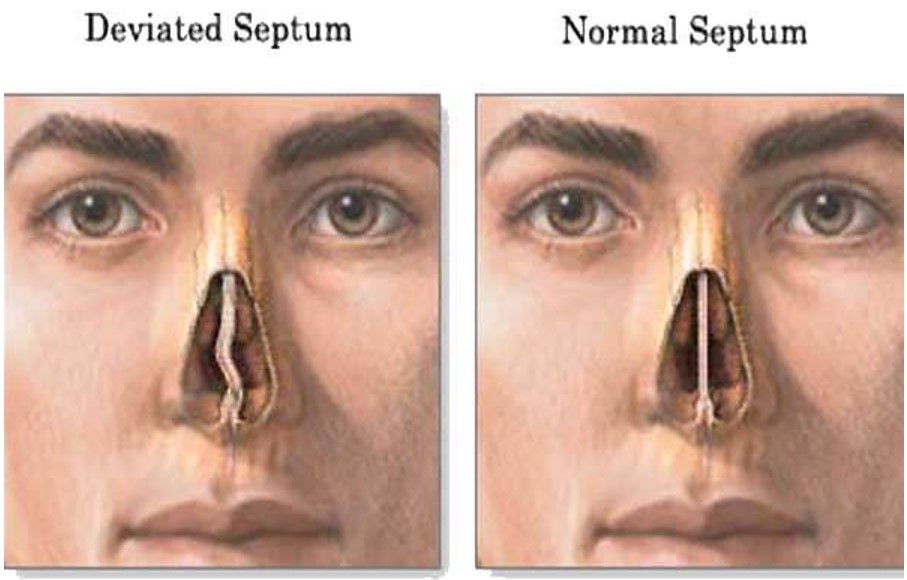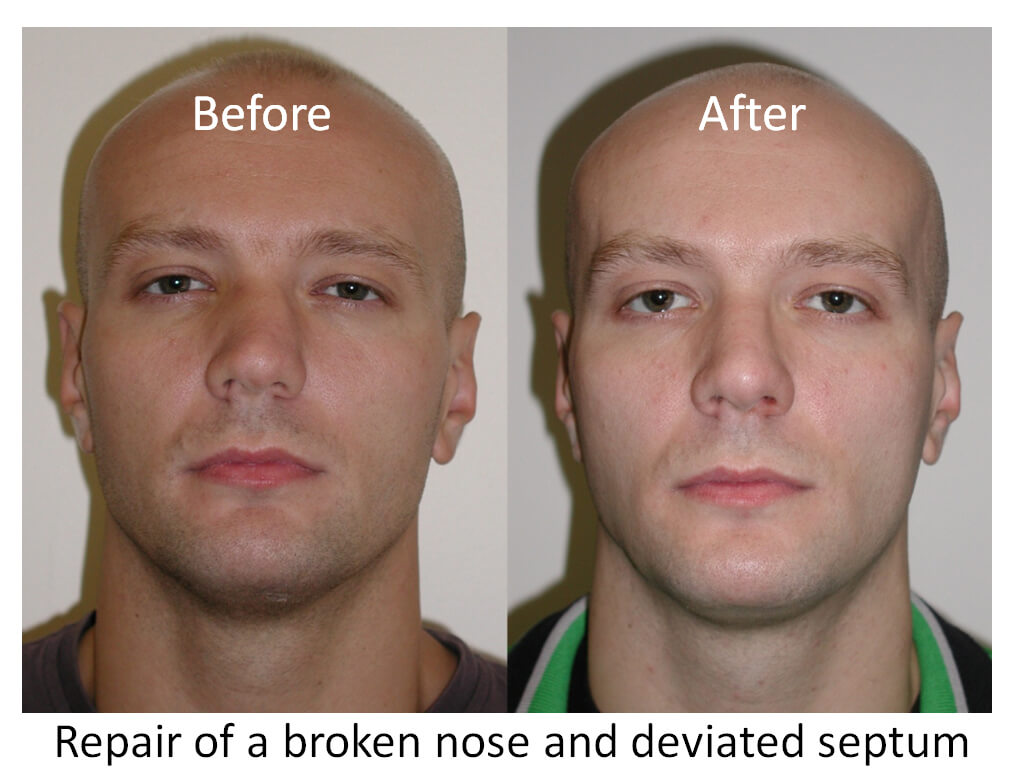Deviated Nasal Bone
When the thin wall (nasal septum) between your nasal passages is moved to one side, you have a deviated septum. The nasal septum is off-center — or deviated — in many people, making one nasal tube narrower.
A significant deviated septum can obstruct one side of your nose and decrease airflow, making breathing difficult. In certain persons, the extra exposure of a deviated septum to the drying action of airflow via the nose can cause crusting or bleeding.
A deviated nasal septum, enlargement of the tissues lining the nose, or both can cause a nasal blockage or congestion (obstruction).
Nasal blockage can be treated with anti-inflammatories or nasal dilators, which assist open the nasal airways. A deviated septum will necessitate surgery.


Symptoms
Most septal abnormalities cause no symptoms, and you may not even be aware that you have one. However, certain septal abnormalities might result in the following indications and symptoms:
- One or both nostrils are blocked. This impediment (blockage) can make breathing via the nose or nostrils difficult. When you have a cold (upper respiratory tract infection) or allergies that cause your nasal passages to enlarge and constrict, you may experience this more. Your nasal septum’s surface may become dry, increasing your chances of nosebleeds.
- Pain in the face. The probable nasal origins of face discomfort are a source of discussion. A significantly deviated septum, which surfaces within the nose contact and produces pressure, might be one cause of one-sided facial discomfort.
- Noisy breathing during sleep. One of the various causes of loud breathing while sleeping is a deviated septum or enlargement of the intranasal tissues.
- The nasal cycle is something to be aware of. It’s usual for the nose to get obstructed on one side, then switch to the other. This is referred to as the nasal cycle. Although the nasal cycle is common, being aware of it is unusual and may suggest a nasal blockage.
- A preference for sleeping on one side over the other. If one nasal tube is restricted, some people may prefer to sleep on one side to maximise breathing via the nose at night.




